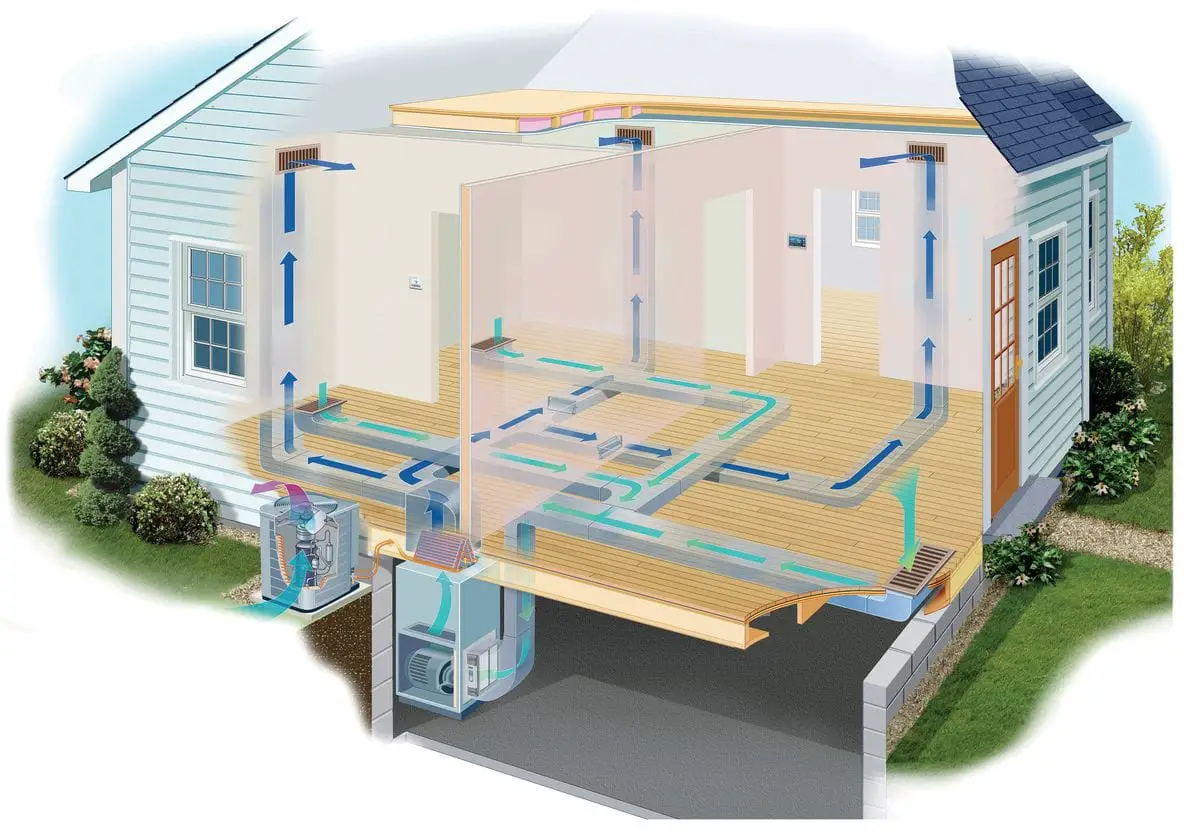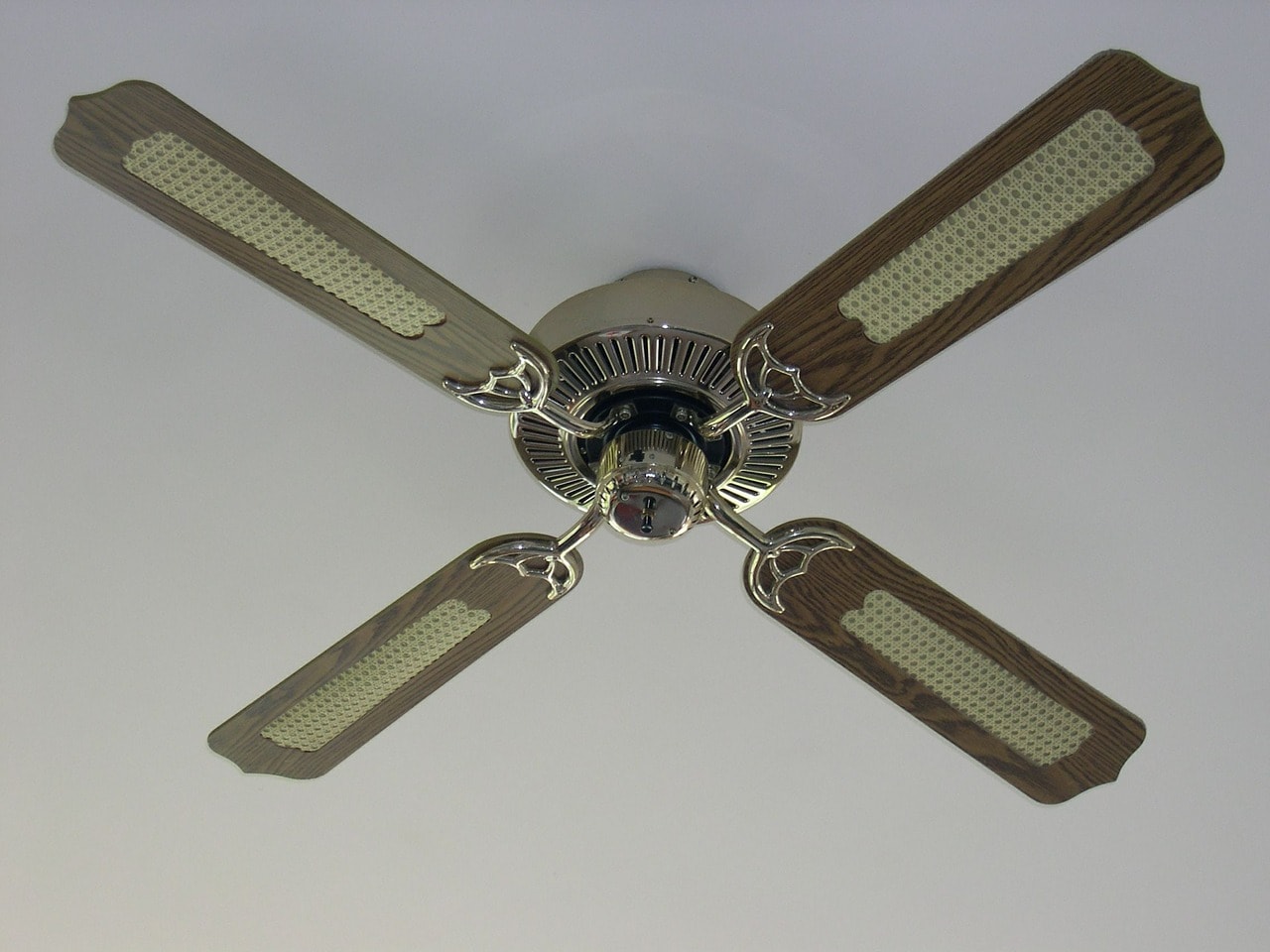In the summer, keeping multi-story houses cool can be challenging and expensive due to increased energy bills.
We often find one area cooler than others, and in some instances, uncomfortably warm.
This article addresses ways to ensure equal cooling throughout and provide a more comfortable indoor environment.

Photo credit: automaticair.com
Why is My Upstairs Hot and Downstairs Cold?
Let's read on.
Hot Air Rises
Hot air naturally rises, and cold air sinks, leading to a warmer upstairs environment than downstairs. Any heating or cooling system should have been manufactured and installed with this in mind. However, if the house's only cooling system is installed on the ground floor, it’ll be much more challenging to cool the second floor. This is mainly if there are large open spaces, such as a passageway, or large windows, upstairs.
Thermodynamics also plays a role. Warm air will naturally try to create a balance with a cooler environment. For example, when opening a window on a hot day, hot air will immediately move indoors and replace the cooler air. The same concept works when the air downstairs is cooler than the air upstairs.
Inadequate Roofing Insulation
Inadequate roofing insulation is one of the biggest causes of unequal cooling upstairs. Sealing, insulation, and ventilation should be regularly checked and maintained as faulty quality can lead to energy waste and inefficient cooling.
The crawl space or attic area just below the roof is an important area requiring insulation. Adequate ventilation is also essential to ensure the circulation of air.
Inadequate or Faulty Ductwork
Cool air is distributed from your HVAC system throughout the house via ductwork. Any leaks or poor installation could lead to airflow not being distributed equally. Aged systems also suffer from wear and tear, which will also affect the distribution of airflow efficiency.
Positioning of Vents
By partially opening your ground floor HVAC system vents, you’ll direct cool airflow upstairs. If the vents are incorrectly positioned, the flow of cool air upstairs will be limited. If they’re closed, it can lead to pressure problems. It’s essential to keep vents and filters clean to prevent blockages.



Photo credit: thisoldhouse.com
How to Get Air Conditioning to Second Floor
This section offers hints and tips for bringing cool air to the second story in your home. There are many issues to consider, like how many rooms there are and the cooling system's size and age. However, with the correct unit for the space in place, the following will cool things down noticeably.
Block Out Heat
By closing blinds and curtains, you block out sunlight, heat, and UV rays. We suggest considering heat blocking shades or UV blocking film and ensuring that there are no gaps around doors and windows allowing heat to get inside. Even more effective are double-pane windows.



Project Details
How Difficult is This to Do?
Medium
How Long Does it Take?
The average window takes approximately one hour to install the product.
How Much Do Materials Cost?
The average cost is $5-$12 per square foot.
Items Needed
A Window Insulation Kit comes with window insulation film and double-sided tape, a tape measure, scissors, and a blow dryer.
The link shows how to install heat blocking treatment for windows.
Ensure Adequate Insulation and Ventilation
Prevent heat from leaking through your roof and attic by adding extra insulation and a fan to help circulate the air and cool the attic area down. Doing so will also minimize the amount of warm air rising from the ground floor.
Project Details
How Difficult is This to Do?
If you’re handy, you could do this yourself. Preferably, you’d let the experts do it.
How Long Does it Take?
Depending on the size of the area, this process could take a few hours.
How Much Do Materials Cost?



An average cost of $1,700 to $2,100.
Items Needed
You’ll need a product like a heavy-duty reflective foam-core insulation barrier attic foil.
Check for leaks in common areas like in the ducting and recessed lighting, and make sure that these are sealed and insulated. Also, ensure that all upstairs vents are open and that nothing is blocking the flow of air.
Follow the links to find a good insulation product and insulation tips.
Climate Zone System
It’s also possible to install a climate zone system that works by opening and closing ductwork slightly, directing the cooled air to the desired area. You could set up customized zones in different areas. We recommend that an expert sets this up.
Project Details
How Difficult is This to Do?
Experts Only
How Long Does it Take?
Approximately eight hours
The link discusses the merits of adding a climate zone system.



How Much Do Materials Cost?
Approximately $2,500 to $3,500, depending on the size of the area
Items Needed
A zone control panel, thermostats, dampers, and a bypass damper
Purchase a Fan
Standard ceiling and floor fans assist in circulating cold air generated by an air conditioner. Although they don't cool down the room's temperature, they make the air feel cooler.
Larger rooms or rooms that receive a lot of direct sun will need additional cooling support, such as ceiling fans and exhaust vents.
Project Details
How Difficult is This to Do?
Easy
How Long Does it Take?
One hour
How Much Do Materials Cost?
Ceiling fans vary from $79.99 to $384, depending on the make, size, and model. Floor fans cost from $19 to $261, depending on the make, size, and model.
Items Needed
Ceiling or floor fan



Ductless Air Conditioning
A mini, ductless, split air conditioner may also help cool your upstairs area and is versatile as you can install it anywhere. You can set it to cool different zones at the same time.
This link will give you more information about this air conditioning option.
Project Details
How Difficult is This to Do?
Let the experts do the installation unless you have plumbing and electrical experience.
How Long Does it Take?
Approximately 12 to 21 hours



How Much Do Materials Cost?
The average cost is $3,000 for a 12,000 BTU system.
Items Needed
Indoor unit with evaporator coils and an outdoor unit with a compressor and condenser coils.
Other Reasons for Uneven Cooling Upstairs
- Airflow restrictions are caused by many factors such as debris trapped in the condenser unit, vents blocked or obstructed by objects like furniture and curtains, dirty air filters, blocked or leaky ducts. All of these cause a restriction of the airflow and affect the cooling capability of the air conditioner.
- Short cycling is when the air conditioner doesn’t run for its complete cycle because of low refrigerant or a problem with the electrical wiring. This can cause the unit to malfunction.
- A unit that is the incorrect size for its cooling area will lead to inefficient cooling and possibly higher energy bills. If the unit is too small, it’ll have to work harder, thereby using more energy. If it’s too large, it’ll result in an uncomfortable environment and wasted energy used.
- If the unit is more than 10-12 years old, you may want to consider replacing it with a newer model as it may no longer run efficiently.
- Change the setting to “on” instead of “auto.” Doing so doesn’t use a lot of energy, but it’ll balance the flow of cool air throughout the house as it is constantly running.
- Partially close AC vents in unoccupied rooms where possible. Doing so will move cool air to rooms in use. Make sure that they are not entirely closed as this can cause pressure problems with the system.
- Heat-generating appliances such as hair dryers should be used as little as possible upstairs, and light bulbs should be switched off when a room is unoccupied. LED light bulbs generate less heat than incandescent bulbs. Cooking also increases the ground floor temperature. It’s wise to wait until later in the day once temperatures have reduced, or you could use an outside grill.



Photo credit: homepromatch.com
Conclusion
There are different ways to improve the circulation of cool air to the upstairs section of your home. Keeping curtains and blinds closed, limiting the use of heat-causing appliances, ensuring that everything is sealed and insulated, and providing your unit's regular maintenance are all effective methods.
However, you may wish to consult an expert if the problem persists and invest in a more effective system.
People Also Ask
Here are some regularly asked questions by home-owners struggling to keep their home's second floor as cool as the ground floor.
Why Does My AC Work Downstairs But Not Upstairs?
An air conditioner may not be as effective upstairs as it is downstairs due to the basic rules of thermodynamics that hot air rises and cold air sinks.
Many other factors can also affect the efficient cooling of a second floor, such as maintenance issues, inadequate sealing and ventilation, and the vent's positioning on the unit.
How Do You Set a Thermostat for a Two-Story House?



Photo credit: Warmboard.com
Place one thermostat somewhere central downstairs, reasonably high up on the wall, and set the temperature approximately two degrees warmer than a second thermostat placed upstairs. You should set the upstairs thermostat to the ideal temperature.
Do I Need a Separate Thermostat for Each Level of My House?
Yes, this is ideal for ensuring a smooth flow of cool air circulating equally throughout the house.
